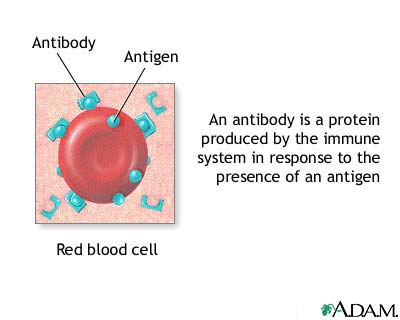Treatment
The goal of treatment is to reduce the number and severity of infections, and to provide genetic counseling to affected families.
Receiving immunoglobulins (IVIG) through a vein (intravenously) helps boost the immune system by providing the body with the antibodies that are decreased or missing. Routine treatment with IVIG is central to the treatment of this disorder.

Antibiotics are often needed to treat bacterial infections.
Prognosis (Expectations)
Treatment with IVIG has greatly improved the health of people with agammaglobulinemia. Without treatment, most severe infections are fatal.
Complications
* Arthritis
* Chronic sinus or pulmonary disease
* Eczema
* Intestinal malabsorption syndromes
Calling Your Health Care Provider
Call for an appointment with your health care provider if:
* You or your child has experienced frequent infections
* You have a family history of agammaglobulinemia or another immunodeficiency disorder and you are planning to have children (ask the provider about genetic counseling)
Agammaglobulinemia: Overview, Causes
Agammaglobulinemia: Symptoms & Signs, Diagnosis & Tests
Agammaglobulinemia: Treatment
Reviewed By : David C. Dugdale, III, MD, Professor of Medicine, Division of General Medicine, Department of Medicine, University of Washington School of Medicine; and Stuart I. Henochowicz, MD, FACP, Associate CLinical Professor of Medicine, Division of Allergy, Immunology, and Rheumatology, Georgetown University Medical School. Also reviewed by David Zieve, MD, MHA, Medical Director, A.D.A.M., Inc.
